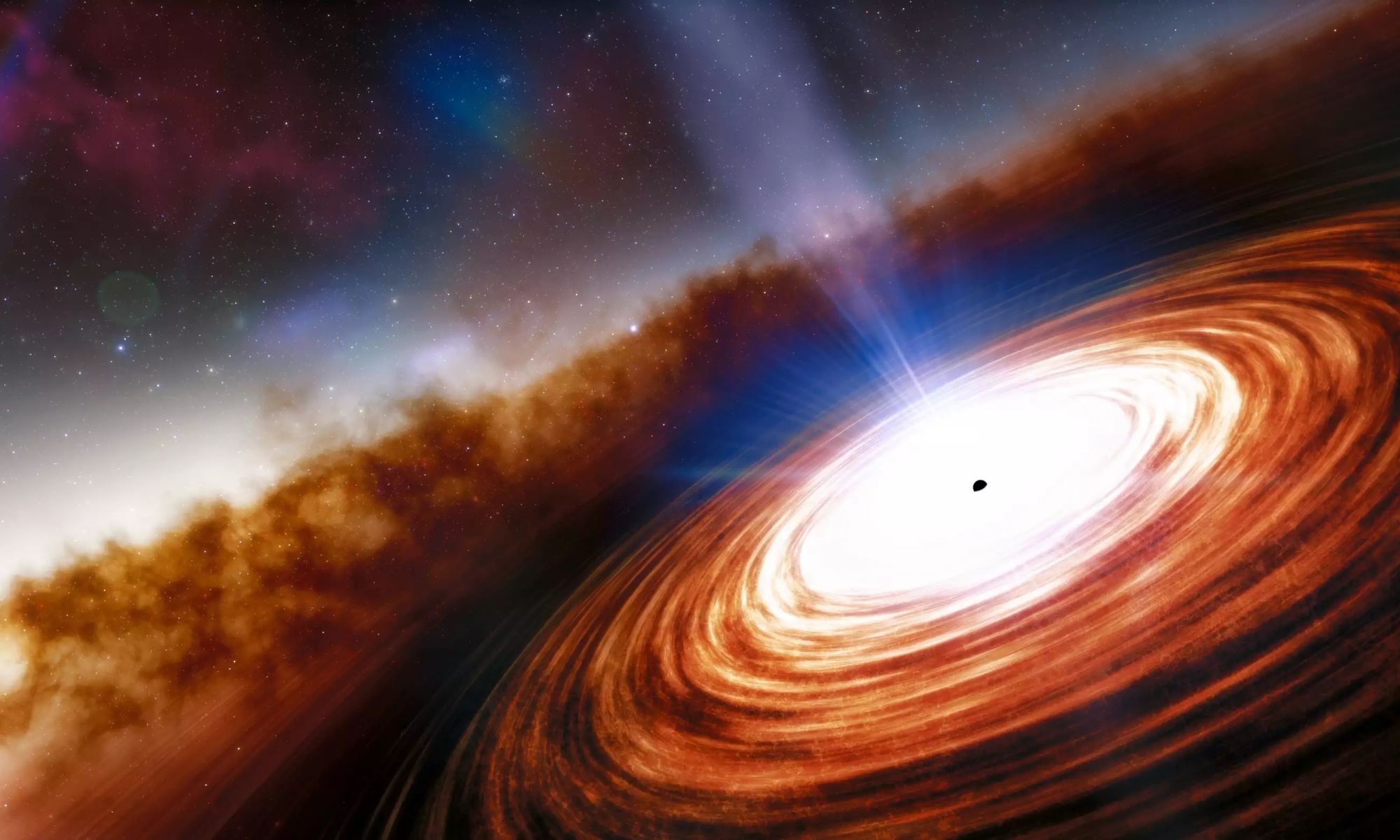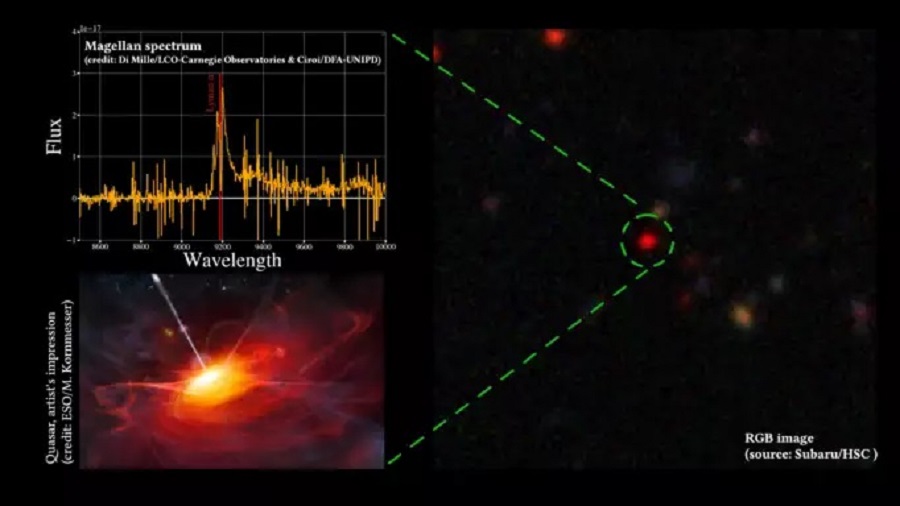After almost seventy years of study, astronomers are still fascinated by active galactic nuclei (AGN), otherwise known as quasi-stellar objects (or “quasars.”) These are the result of supermassive black holes (SMBHs) at the center of massive galaxies, which cause gas and dust to fall in around them and form accretion disks. The material in these disks is accelerated to close to the speed of light, causing it to release tremendous amounts of radiation in the visible, radio, infrared, ultraviolet, gamma-ray, and X-ray wavelengths. In fact, quasars are so bright that they temporarily outshine every star in their host galaxy’s disk combined.

The brightest quasar observed to date, 100,000 billion times as luminous as our Sun, is known as SMSS J114447.77-430859.3 (J1144). This AGN is hosted by a galaxy located roughly 9.6 billion light years from Earth between the constellations Centaurus and Hydra. Using data from the eROSITA All Sky Survey and other space telescopes, an international team of astronomers conducted the first X-ray observations of J1144. This data allowed the team to investigate prevailing theories about AGNs that could provide new insight into the inner workings of quasars and how they affect their host galaxies.
The team was led by Dr. Elias Kammoun, a postdoctoral researcher with the Research Institute in Astrophysics and Planetology (IRAP), and Zsofi Igo, a Ph.D. candidate at the Max Planck Institute for Extraterrestrial Physics (MPE). They were joined by colleagues from the IRAP and MPE and researchers from the Italian National Institute of Astrophysics (INAF), the Leibniz Institute for Astrophysics (AIP), and multiple universities. The paper that describes their findings appeared on April 3rd in the Monthly Notices of the Royal Astronomical Society.
Built by the MPE, eROSITA is the primary instrument on board the Spectrum-Roentgen-Gamma (SRG) – aka. Spektr-RG – a Russian-German space observatory launched in 2019 and currently operating in a halo orbit around the L2 Lagrange point. This observatory was designed to perform the first all-sky survey in the medium energy X-ray wavelength – up to 10 kilo-electronvolts (keV). During its first five sky scans between 2020 and 2022, eROSITA detected J1144 as an X-ray source. However, it was not observed in visible wavelengths until 2022 by the SkyMapper Southern Survey (SMSS).
As they state in their study, most of what is known about AGNs is based on the study of nearby, low-mass, low-accretion quasars. Detailed observations of a high-mass, high-accretion AGN are needed to understand how SMBHs grow over time and how this affects their host galaxy (and several key properties of AGNs). In addition to its brightness, J1144 is much closer to Earth than similarly-luminous sources, making it ideal for astronomers to observe its SMBH and the effects it has on the surrounding environment. As Dr. Kammoun explained in an MPE press release:
“Similar quasars are usually found at much larger distances, so they appear much fainter, and we see them as they were when the Universe was only 2-3 billion years old. J1144 is a very rare source as it is so luminous and much closer to Earth, giving us a unique glimpse of what such powerful quasars look like.”
For their study, Dr. Kammoun and his colleagues combined data from several space telescopes, including the SRG, the ESA XMM-Newton observatory, NASA’s Nuclear Spectroscopic Telescope Array (NuSTAR), and NASA’s Neil Gehrels Swift observatory. This allowed them to test theories about the X-ray properties of a high-mass, high-accretion AGN. This allowed them to measure the temperature of the X-rays being emitted, around 350 million K (~350 million °C; 630 million °F), more than 60,000 times the Sun’s surface temperature.

Visualization of a faint X-ray source detected by the eROSITA Final Equatorial-Depth Survey (eFEDS). Credit: MPE/Cluster Origins
These results also allowed them to constrain the mass and growth rate of the central black hole, which they estimate to be 10 billion solar masses, and growing on the order of 100 solar masses per year. Moreover, observations by the eROSITA instrument showed how J1144 has evolved over time, including how its brightness varies over the course of a year but remains relatively consistent in terms of its energy spectrum. These observations also revealed variability over the course of a few days, which is not usually seen with high-mass, high-accretion black holes.
Lastly, the team’s observations showed that while the black hole consumes some gas from its disk, another portion is ejected to become extremely powerful winds. This process transfers tremendous energy from the AGN into the host galaxy, blowing away gas and dust that would otherwise come together to form new stars. Astronomers have noted this effect in recent years, and these observations offer additional support to the theory that AGNs can “shut down” star formation in galaxies.
This study further highlights how radiation pressure plays an important role in the evolution of galaxies with high-mass, high-accretion AGNs. Unlike studies of similarly-bright quasars, the research by Dr. Kammoun, Igo, and their colleagues provides vital information on a bright source that existed more recently (in astronomical terms). These and related findings are set to influence our most widely-accepted cosmological models, which have been experiencing a bit of a shake-up lately!
Further Reading: MPE, MNRAS





